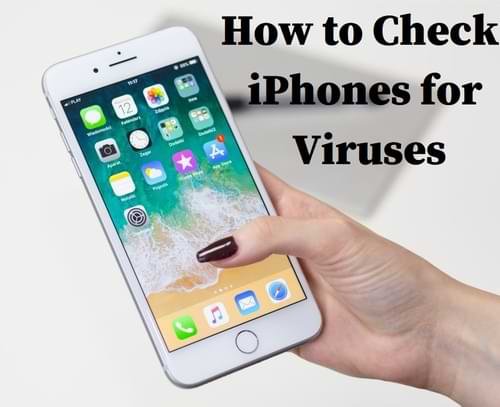The motive of this guide is to educate people to check iPhones for viruses. If you are suspicious that your iPhone or iPad may be infected by a virus or malware then reading this guide can help you understand the symptoms.
Most people think iPhones cannot get infected by viruses. But they are wrong. There are scenarios in which your iPhone can get infected by a virus or malware. But you have to know how to identify the signal. So if you want to check iPhones for viruses, then read this guide carefully.

Malware like browser hijackers, redirect viruses and adware are most likely to infect mobile devices. Although Apple has taken several preventive measures to protect iPhone and iPad from threats like these. However, viruses can still find their way on your Apple mobile devices. In simple words, after all the security features, your iPhone Can get a virus. If you know how to check iPhones for viruses, then you can easily take immediate action to protect your privacy and device security.
Viruses are programmed to sneak without being noticed. Users only find out their device is compromised when they face severe consequences like data stealing, unusual web redirection, unwanted pop-up ads, unusual charges, fake subscriptions, and so on. Threats do not reveal themselves instantly after infecting your iOS devices. They lay low and keep doing their malicious activities. So it’s up to you to be more careful and look out for symptoms.
How to check iPhones for Viruses?
An infected iPhone would display the following symptoms.
1. Increased data usage – If you notice a sudden increase in data usage by mobile devices then it means your iPhone is transmitting more than the usual amount of amount. This could only happen if you have installed lots of new apps. If not, then it could be caused by a malicious app that is spying on your activities and sending all your personal information to third parties.
2. Excessive app crashing – Apps crash is not normal for iPhone. Apple provides lots of storage in its high-end devices. They are costly and made for performance. All the apps on iPhone are only downloaded through the App Store, so it is highly unlikely that your apps started crashing for no reason. This could be the effect of a virus/malware intrusion which takes lots of system resources and thus other apps keep crashing.
3. Adware pop-ups – Some premium apps offer ads if you are using the free version. But when you start getting pop-up ads on your device when you are not using the free version of premium apps then it’s a sign of a virus. Unwanted browser redirection and pop-up notifications on your iPhone screen could also be caused by malware.
4. Unexplained phone bills – Some malware infections get access to your SMS services. These threats can send and receive SMS messages from your phone without your permission. This could cause an unusual amount of charges that you don’t know but when they will appear on phone bills you will keep scratching your head.
5. Unfamiliar apps – If you suddenly get some unknown app on your iPhone that you don’t recall downloading, then it could be a virus. Most of the times malware can silently install new apps on your devices for extra help. They hide beneath these apps and keep doing their evil activities. It is a very common symptom of virus intrusion on Android phones, but it can also happen on iPhones.
6. Faster battery drain – If you notice that suddenly your iPhone battery backup diminished for no reason then it could be also a signal of malware intrusion. Malicious apps use more devices resources so they also use more battery. So if the battery on your iPhone is draining faster than usual, it is a serious problem.
7. Overheating – If your iPhone is infected by malware, then that virus can keep running in the background. So even you are not using your phone, that malware is active. This could cause overheating of your device. You might notice that your device is warm when you are not using and it gets heated quickly after very little use. This is a serious symptom of malware. If not resolved, this issue might also harm the hardware of your Phone and even cause bursting.
So these are the 7 most common symptoms of malware intrusion on any iPhone or iPad. If you encounter any of these problems then there is a high probability that your device is infected. So I hope now you know how to check iPhones for viruses.



Leave a Comment